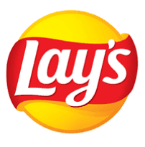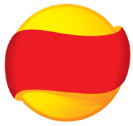
Demystifying the types of permissible trademarks in the emerging IP stronghold of Cape Verde

As per Article 139 of Cape Verde’s Trademark Law, a trademark may consist of a “sign or an arrangement of signs capable of being represented graphically, particularly words, including personal names, designs, letters, numerals, sounds, the shape of goods or of their packaging, as long as they are capable of distinguishing the products or services of one company from those of other companies”. Marks may also consist of “advertising phrases for the products or services to which they refer, provided that they are distinctive, regardless of the protection granted to it by the copyright law”.
Nonetheless, the diversity of elements protected in Cape Verde are similar to those observed in most trademark offices and may be grouped into three major categories.
Word trademarks – composed exclusively of words, combined letters and numbers. Letter style is not protected, only the verbal elements within the trademark. As such, word marks provide their owners with a wide scope of protection, as the trademark may be represented in any visual style.
- Word and device trademarks – these combine visual elements such as symbols, or images with text. In other words, it is the combination of a word trademark and a device trademark and often corresponds to the style of text.
For example, trademark number 4283/2020 - Classes 29 and 30.

Device trademarks - composed of a drawing, image, ideogram and figurative form of text, these can also be formed by numbers or words written in non-Latin characters, for instance Chinese, Arabic or Japanese.
For example, trademark number 4289/2020 - Classes 29 and 30.

Out of 4,417 published trademarks in Cape Verde, 2,038 are word trademarks, 2,106 are word and device trademarks, and 271 are device trademarks.
As well as these three categories, protection is also available for non-traditional trademarks, which allow companies to obtain trademark rights in 3D shapes, colours, scents, sounds, flavours, textures and other non-traditional marks that identify and distinguish the source of goods and or services. Not only do distinctive non-traditional trademarks provide source-identifying information but they may also convey special expression and creativity.
"Non-traditional trademarks still play a backstage role in Cape Verde, which may be partly a result of lack of awareness."
Non-traditional trademarks – Cape Verde’s reality
- Colour
A single colour does not qualify for protection as a trademark. However, colour combinations or colours combined with graphics, words or other elements in a distinctive or peculiar manner qualify a mark for protection (Article 140).
- Sound
Sounds may be protected as trademarks if they are capable of distinguishing a company’s products or services from those of others. Applications of sound trademarks must be accompanied by the graphic representation and the “musical phrases of the sounds that enter into the composition of the trademark” (Article 152).
- 3D marks
Product configurations may be protected as a trademark if they are capable of distinguishing a company’s products or services, and under the condition that such configurations are not exclusively constituted by the shape that results from the nature of the product, which is necessary to obtain a technical result or which gives substantial value to the product. Applications for 3D trademarks must be accompanied by their graphic representation (Article 152).
- Touch, scent and flavour
Notwithstanding the breadth of Article 139, which refers to the trademark’s constitution, there is no provision of registrability of product texture. By using the linguistic element “particularly words, including personal names, designs, letters, numerals, sounds, the shape of goods or of their packaging”, Article 139 narrows the scope of possibilities and discards touch trademarks. The same terms apply to scents and flavours (notwithstanding Article 139).
Although IP law provides for the possibility of protection of some non-traditional trademarks, relying on the public information provided in the Cape Verdean IP Bulletin, such applications are rare. Non-traditional trademarks still play a backstage role in Cape Verde, which may be partly a result of lack of awareness. In addition, the law is limiting – instead of giving more freedom to IP holders to use non-traditional trademarks that are capable of distinguishing goods and services it merely lists the permissible types of trademarks.
Cape Verde does not have an established convention for non-traditional trademarks; more awareness of their existence and an IP law more focused on this problem may change this in due time.
This is a co-published article, which was originally published in the World Trademark Review (WTR).